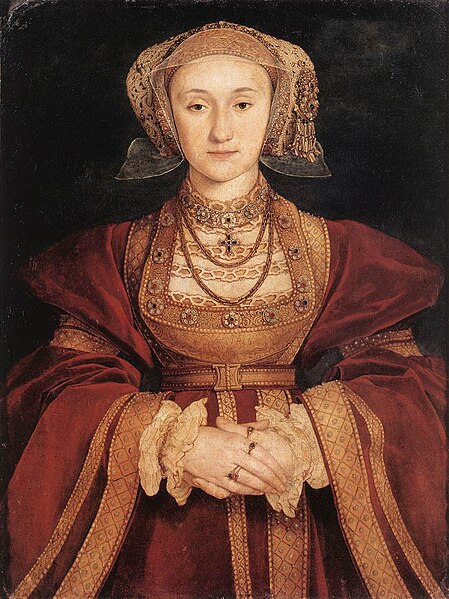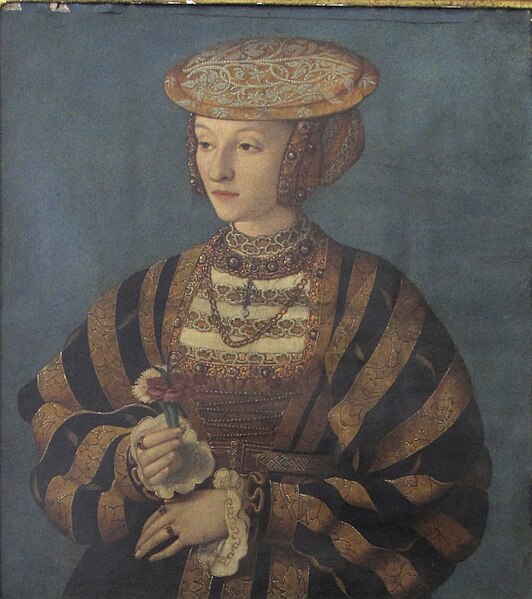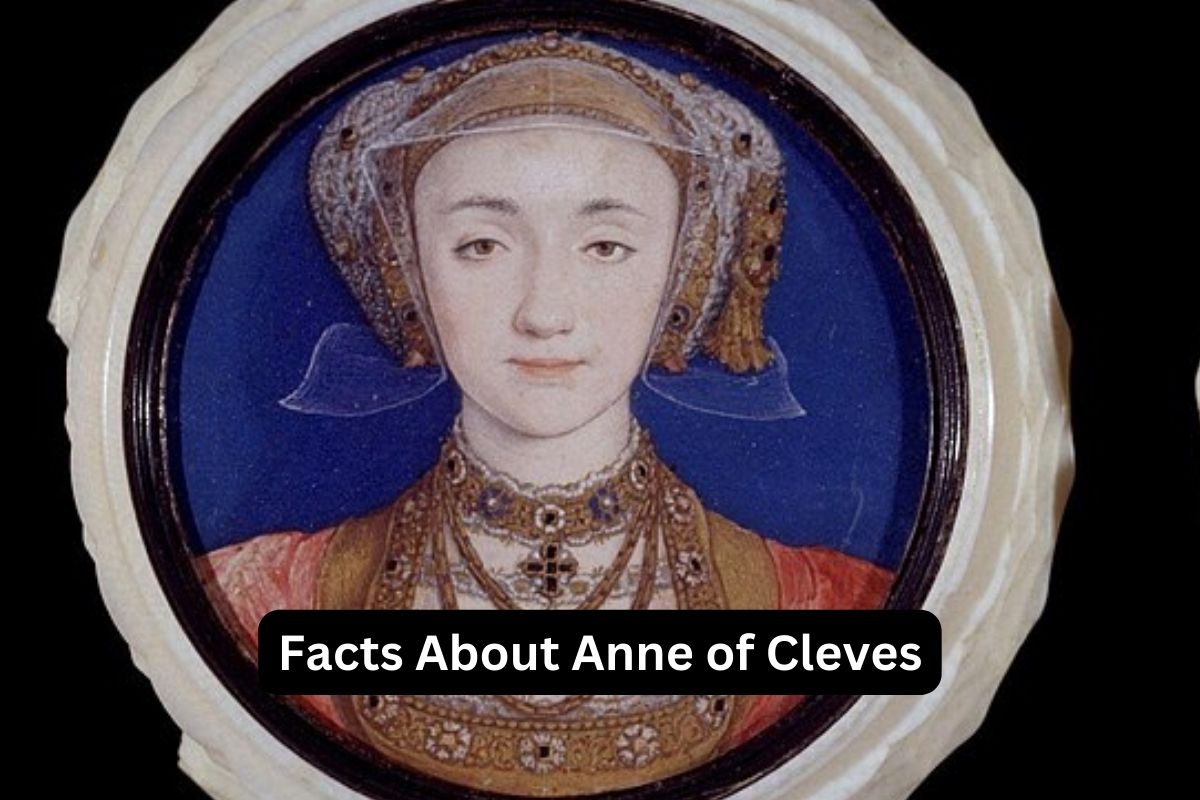Anne of Cleves, born on September 22, 1515, in Düsseldorf, Cleves, was a German noblewoman.
She became the fourth wife of King Henry VIII of England in 1540 as part of a political alliance but had her marriage annulled just six months later.
Anne received a generous settlement and chose to live independently in England as a devout Catholic.
She outlived Henry VIII and all his wives, passing away on July 16, 1557, and was buried in Westminster Abbey.
Anne of Cleves is remembered for her ability to navigate the turbulent Tudor court and her enduring presence in historical fiction and media.
Anne of Cleves Facts
1. Born on September 22, 1515, in Cleves, Germany
Anne of Cleves was born on September 22, 1515, in Düsseldorf, Cleves, which is in the region now known as North Rhine-Westphalia, Germany. She was the daughter of John III, Duke of Cleves, and Maria of Jülich-Berg.
Also Read: Facts About Jane Seymour
She came from a prominent and influential European noble family, and her birthplace in the Duchy of Cleves was strategically located in the heart of Europe.

2. Her marriage to Henry VIII was a political alliance
Anne’s marriage to King Henry VIII of England was primarily a political alliance. In the 16th century, marriages among European royalty often served political purposes, and Anne’s union with Henry was no exception.
Also Read: Catherine Howard Facts
The marriage was arranged to form an alliance between England and the Duchy of Cleves.
At the time, England sought allies against the perceived threat of France and the Holy Roman Empire. The hope was that this marriage would strengthen England’s position on the European stage.
3. Famous for the portrait by Hans Holbein
Anne of Cleves is perhaps most famously known for the portrait painted by the renowned artist Hans Holbein the Younger. This portrait was commissioned by Henry VIII’s court in 1539, before the marriage took place.
Holbein’s portrait presented Anne in a flattering and idealized manner. Henry VIII, upon seeing this portrait, was led to believe that Anne was more attractive than she actually appeared in person.
The portrait played a significant role in shaping Henry’s expectations, and when he met Anne in person for the first time, he was reportedly disappointed with her appearance, leading to the eventual annulment of their marriage.
4. Marriage to Henry VIII annulled after just six months
Anne’s marriage to King Henry VIII of England took place on January 6, 1540, in a grand ceremony at the Palace of Placentia in Greenwich.
However, this union was short-lived, as Henry soon became dissatisfied with Anne’s appearance and personality. After just six months of marriage, in July 1540, Henry sought an annulment.
5. Received a generous settlement after the annulment
The annulment of Anne’s marriage to Henry VIII was relatively amicable compared to some of his other marriages. Anne agreed to the annulment, and both parties consented to the separation.
As part of the annulment agreement, Anne received a generous settlement, which included several properties, a substantial income, and the title of “The King’s Sister.”
She also maintained a friendly relationship with both Henry and Henry’s subsequent wives. This settlement allowed Anne to live comfortably and independently in England.

6. Chose to live independently in England
After her marriage to Henry was annulled, Anne of Cleves chose to remain in England rather than returning to her native Cleves, which had adopted Protestantism.
She enjoyed relative freedom and independence, living a quiet and private life away from the political intrigues of the English court.
Unlike some of Henry’s other wives who faced tragic fates, Anne’s decision to remain in England allowed her to avoid the dangers of court politics and the ever-changing whims of the king.
7. Remained a devout Catholic throughout her life
Throughout her life, Anne of Cleves remained a devout Catholic, even in the midst of the religious changes and upheaval during the reign of Henry VIII.
This was in contrast to the religious shifts in England, where Henry VIII had broken with the Catholic Church to establish the Church of England.
Anne’s steadfast Catholicism was one of the reasons she chose to remain in England after her marriage was annulled, as her native Cleves had embraced Protestantism. Her religious beliefs had a significant impact on her life and choices.
8. Outlived Henry VIII and his six wives
Anne of Cleves outlived her former husband, King Henry VIII, as well as all six of his wives. Henry died on January 28, 1547, while Anne lived until July 16, 1557.
Her ability to survive the tumultuous court politics of Henry’s reign and the fates of his other wives is a testament to her adaptability and shrewd decision-making.
9. Died on July 16, 1557, in London
Anne passed away on July 16, 1557, at the age of 41. She died at Chelsea Old Manor, which was one of her residences in London.
10. Buried in Westminster Abbey
After her death, she was buried in Westminster Abbey. However, her tomb is relatively modest compared to the grand and elaborate monuments dedicated to some of Henry’s other wives. Anne’s tomb features a simple Latin inscription and effigy, reflecting her relatively quiet and unassuming life in England.
